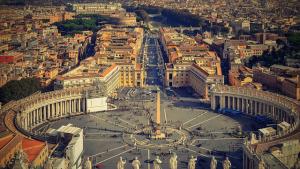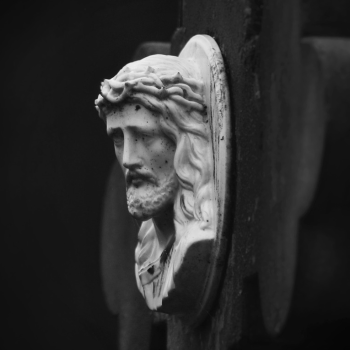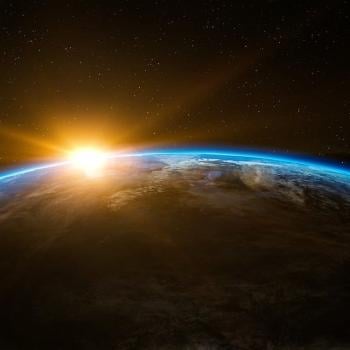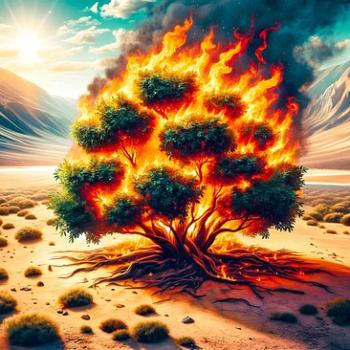
“Upon this rock, I will build my church, and the gates of the netherworld shall not prevail against it.” – Matthew 16:18.
Jesus’ promise to build His Church would be fulfilled on Pentecost, and some two thousand years later, the Catholic Church remains. In this paper, I will seek to provide a brief overview and history of the Church and its structure. I will conclude by examining the purpose of the “mystical body of Christ.”
History
In a very real sense, it is impossible to speak of the history of Western Civilization without speaking of the Catholic Church. The history of the Roman Empire, as well as the history of Europe, is inextricably intertwined with the Catholic Church.
The Catholic Church traces its commencement to Pentecost. It is at Pentecost that the Holy Spirit descends upon the apostles and, in so doing, completes the Paschal mystery.
Based on the words spoken by Jesus (“Upon this rock, I shall build my Church), Peter is considered the first pope. Under Peter’s leadership and strengthened by the Holy Spirit, the apostles formed house churches. Indeed, house churches were essential to Catholicism’s growth and ultimate triumph for the first three centuries after Pentecost. The spread of Catholicism through these house churches allowed the believers to challenge the social order of the day. They became witnesses – through their words, lives, and suffering.
The New Testament provides several references to house churches. These were family homes where Catholics would gather and ponder the life and message of Jesus while growing in their faith. (See Acts of the Apostles 2:46).
Despite opposition and persecution, the disciples spread the Gospel message throughout Asia Minor and the whole of the Roman Empire. In AD. 313, the first Catholic Church, San Giovanni Laterano, was built in Rome.
In AD. 380, the Roman Empire officially declared Christianity as the religion of the Empire. At the height of the Empire, its reaches included much of what today is Western Europe. As such, Catholicism spread into Europe and, eventually, into the new world of the Americas.
The Roman Empire is long gone, but the Basilica at San Giovanni, like Catholicism itself, remains.
Structure
Within the Church, there are six levels of the clergy included within the sacrament of Holy Orders. The Pope is the head of the visible body of the Catholic Church. It is vital to make a distinction here. The Church is the mystical body of Christ, and as such, its head is Jesus. The Pope, as the vicar or representative of Christ, is the head of the Church on earth. Said differently, the Pope is Peter’s successor as the head of the apostles.
Cardinals are the leading bishops as well as members of the College of Cardinals. Their most significant duty is participating in the Papal Conclave, which entails choosing a new Pope. In addition, Cardinals are often involved in the governmental body of the Church, which is known as the Roman Curia.
Below the Cardinals are the Archbishops. Archbishops are critically important bishops. They oversee large areas of churches called archdioceses. Finally, Archbishops are responsible for oversight and management of bishops within their assigned geographical region.
Bishops are ordained ministers who act as the head of a diocese or eparchy (the Eastern Orthodox equivalent of a diocese). Bishops are entrusted to teach and delegate the teachings of the Church to priests, teachers, and catechists. They are also responsible for the training and supplying of priests within their area of responsibility. Finally, Bishops are to ensure that the sacraments of the Church are properly administered.
After the seminary, and after the diaconate, a man undertakes the Rite of Ordination. This ordains them into the priesthood. The priest performs the ceremony of the Eucharist, hears confession, and conducts the Anointing of the Sick. Priests are also able to perform Holy Matrimony. The Catholic Church distinguishes two kinds of priests: religious and diocesan. Diocesan priests lead individual parishes. They serve the people within their parish and are not required to take the same vowels as religious priests. This type of priest is more common in secular countries without a solid traditional Catholic population.
Religious priests, however, vow themselves to a religious order, such as the Dominicans. They wear particular religious garb and take additional vows of poverty and obedience. They typically live in a group house alongside other members of the order.
The last level of the clergy is the deacons. The role of deacons is to assist priests in preaching, the conferral of baptism, the performance of marriage, and the administration of parishes. Frequently, deacons are seminarians studying for the priesthood.
While the Pope is the head of the visible Church, he acts in accord with the curia. The curia is the ensemble of departments or ministries which assist the sovereign pontiff in the government of the Catholic Church. Essentially, the curia is the governing body of the Church.
Yet within the curia, there are divisions or congregations known as dicasteries. Dicasteries concern themselves with various administrative and ecclesiastical duties. For example, the dicastery for the Doctrine of the Faith is responsible for safeguarding the doctrine of faith and morals.
Purpose
In a very real sense, the purpose of the Catholic Church is summed up by the words of Christ. “Go, therefore, and make disciples of all nations, baptizing them in the name of the Father, and of the Son, and of the Holy Spirit, teaching them to observe all that I have commanded you.” (Matthew 28:19-20).
It is the responsibility of the Church to uphold, clarify, and spread the Gospel message. As Jesus’ words indicate, there are certain activities or rituals that the Church has been entrusted with. These activities or rituals are known as sacraments. Without going into the specifics of each sacrament, it will suffice to say that God has entrusted His Church with seven sacraments. “The purpose of the sacraments is to sanctify men, to build up the body of Christ, and finally, to give worship to God.” (Catechism of the Catholic Church, Paragraph 1123).
Therefore, we can say that the purpose of the Catholic Church is to make people holy, to work to bring about the Kingdom of God, and to give the right worship that is owed to God.
Conclusion
In this paper, I have sought to provide an introduction to the history, structure, and purpose of the Catholic Church.
I have delineated the types of clergy and provided an organization outline of the Church. Finally, I have suggested the purpose of the Catholic Church is to work toward bringing about the Kingdom of God. This is done through the administering of the sacraments, and it is done by the proper worship of God.












